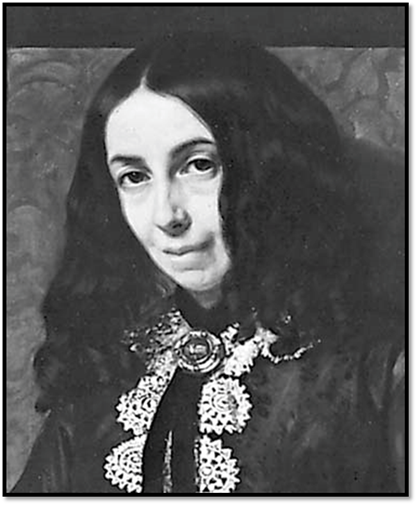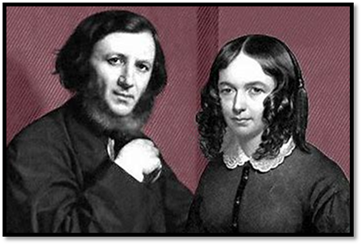Regency
Era
SONNET 43
By Elizabeth Barrett Browning

Image 1: Browning, Elizabeth Barrett. Image. Britannica School, Encyclopædia Britannica, 6 Nov. 2020.
Unit Overview
In this unit, you will be reading
"Sonnet 43" by Elizabeth Barrett Browning.
Sonnet 43 is better known by its famous first
line, "How do I love thee? Let me
count the ways."
Elizabeth Barret Browning's Sonnet 43 is one of
the most famous poems in the English language.
As you read, you will be exploring the theme of
Love
as it relates to the text.
You are trying to answer this big question: "How does Love change us? "
Background

Elizabeth Barrett Browning (1806-1861) was an
English poet during the Romantic Movement. "Sonnet 43" is one of the
most famous poems written in the English language. This poem was initially
published in 1850 in a collection called Sonnets from the Portuguese. "My
Little Portuguese" is a nickname Browning used for her husband.
As you read, take notes on the tone and mood of this poem.
Literary Terms &
Notes
Below is a flipbook
of important terms and notes that will help you understand the passage. It is important that you go over all the
terms and notes before reading the excerpt.
Let's Practice
Tone and Mood
The video above states
that the tone of a story relates to the narrator's attitude and the mood
is the general atmosphere of the story and the feeling the reader gets. Below are some notes on tone and mood.
· One way to identify the tone is too late key words in the poem or
story.
· Tone expresses the author's attitude toward their subject
· Examples of tones
o Informational
o Sarcastic
o Comic
o Cheerful
· How a reader feels when they read a piece of text is the mood.
· Authors can use many literary devices to help create a mood.
o Images
o Sounds
o Settings
Let's Practice
Sonnet 43
Listen to the poem below.
Before you begin
reading Sonnet 43, read and
study the analysis below.
|
Lines of the Poem |
Analysis |
|
1 How do I love thee? Let me count the ways. 2 I love thee to the depth and breadth and
height |
·
the first line is the
introduction to the rest of the poem ·
the second line is showing how
much she loves him. |
|
3 My soul can reach, when feeling out of
sight 4 For the ends of Being and ideal Grace |
·
She
means she will love him until the end of her life |
|
5 I love thee to the level of everyday's 6 Most quiet need, by sun and candlelight. |
·
She
loves him day and night. |
|
7 I love thee freely, as men strive for
Right; 8 I love thee purely, as they turn from
Praise. |
·
Is
she saying she wants to be free to love him? |
|
9 I love thee with the passion put to use 10 In my old griefs, and with my childhood's
faith. |
·
She
loves him with the same strength of emotion she felt when she was sad or mad
in the past. |
|
11 I love thee with a love I seemed to lose 12 With my lost saints,—I love thee with the
breath, |
·
She
loves him all of the time (with every breath) |
|
13 Smiles, tears, of all my life!—and, if God choose, 14 I shall but love thee better after death. |
·
She
loves him in good and bad times |
Let's Practice
Sonnet 43 by Elizabeth Barrett Browning
You can read the passage two ways:
1. Click on Unit Resources and
read the printed version of the text.
2. Sign-up on "COMMONLIT"
and receive an enhanced version of the text.
As you read, take notes on the tone and mood of this poem.
